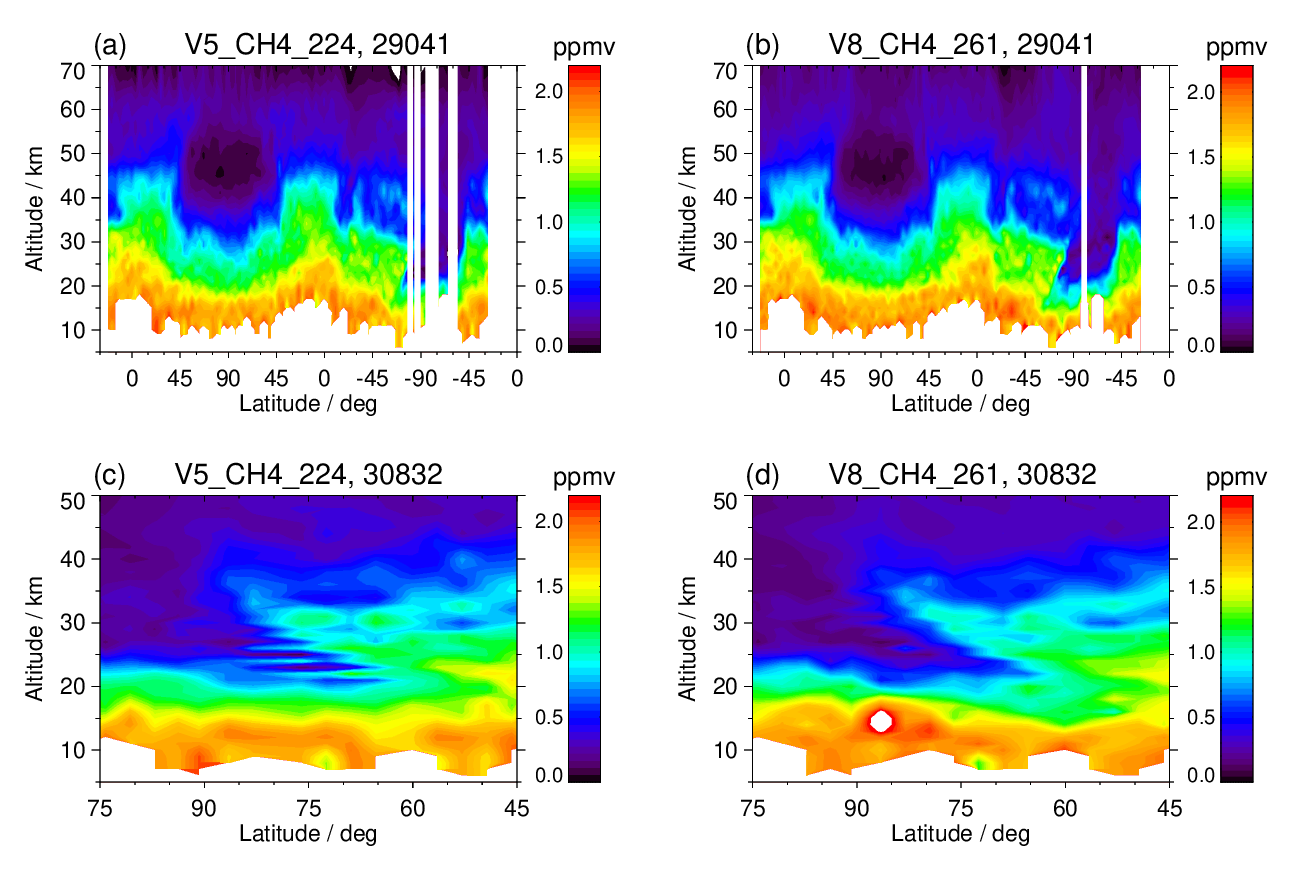Satellite-borne remote sensing of trace gases (SAT)
We investigate the complex interaction of chemical and dynamical processes in the Earth's atmosphere on basis of distributions of trace gases, aerosols, clouds and temperature which we derive from spectral measurements of satellite remote sensing instruments. Our work field covers processing of satellite data and their validation, the research on physical and chemical processes in the atmosphere on the basis of the retrieved distributions of temperature, particles and trace gases, and the development and implementation of related satellite data analysis algorithms. The current focus of our work is the MIPAS-Envisat mission. The MIPAS satellite data derived by our group can be accessed here. Besides our work with MIPAS we are involved in the preparation of future space missions. On this website you find information about our publications, MIPAS-Envisat data, our radiative transfer model KOPRA, the team and our projects.

Improved CH4- and N2O-retrieval using MIPAS-V8 spectra

The improvement of the vertical resolution especially shows up in enhancement of the poor resolution of the V5 data around 15 km, but also in improvements in the middle and upper atmosphere. This was achieved both by taking into account more CH4 and N2O lines in the spectral region used so far and by increasing the wavenumber range applied for analysis to 1217.0--1337.9375 cm-1. Joint-fitting of CH4 and N2O gradients as well as use of an oscillation detection between subsequent iteration steps of the retrieval led to the improvement in convergence rates and to the removal of formerly physically unrealistic strong oscillations in various profiles.For more details kindly refer to this publication.
